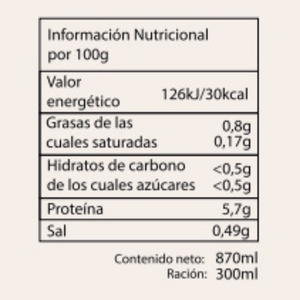Toxins disrupt our hormones and generate inflammation, as they are stressors for the body. Your home should be a safe haven, but often without realizing it, we are surrounded by products and materials that contain toxic chemicals. These can affect our long-term health, causing allergies, respiratory problems, and even hormonal imbalances.
We recommend small changes you can make to reduce your exposure to these compounds and create a healthier space for you and your family.
- Natural cleaning products
Conventional cleaning products often contain harsh chemicals like ammonia, chlorine, and phthalates. To avoid these toxins:
• Opt for natural, organic, or hypoallergenic cleaners.
• Make your own homemade products with simple ingredients like white vinegar, baking soda, and lemon.
- Change your kitchen utensils
Kitchenware can be a major source of toxins, such as Teflon and plastics that release harmful substances when heated. Choose:
• Stainless steel, cast iron, or non-toxic ceramic pans.
• Avoid plastic containers for storing food; use glass or stainless steel.
- Purifies the air
Indoor air can be more polluted than outdoor air due to the use of chemicals. Improve its quality with these measures:
• Ventilate your home daily by opening windows for at least 15 minutes, especially after cleaning to avoid inhaling chemical residue.
• Use air-purifying plants such as peace lily, sansevieria bamboo palm, or pothos.
• Consider investing in an air purifier, especially if you live in urban areas.
- Take care of water quality
Tap water may contain traces of chlorine, heavy metals, and pesticides. To improve it:
• Install a water filter on your faucet or use a pitcher with an activated carbon filter. We like Alkanatur.
• Avoid drinking water from plastic bottles; opt for reusable glass or steel containers.
- Eliminate synthetic air fresheners
Air fresheners and scented candles often contain volatile organic compounds (VOCs) that pollute indoor air. Replace them with:
• Essential oil diffusers.
• Candles made of beeswax or soy with natural fragrances.
• Bouquets of eucalyptus, fresh herbs or dried flowers for a subtle aroma.
- Be a conscious shopper
• Review the materials of your furniture and decorative accessories; invest in furniture made from solid wood or certified as toxic-free.
• Choose natural textiles : Organic cotton, linen, or bamboo for your bedding, towels, and curtains, and natural fibers like wool, cotton, or sisal for your rugs.
• Read the labels of the products you buy and look for certifications such as “organic,” “free of toxic chemicals,” or “low VOC.”
Information is your best tool for making healthy decisions.
Making your home toxic-free is a gradual process, but every little change helps.
By reducing your exposure to chemicals, you're not only taking care of your health, but also the planet's!








